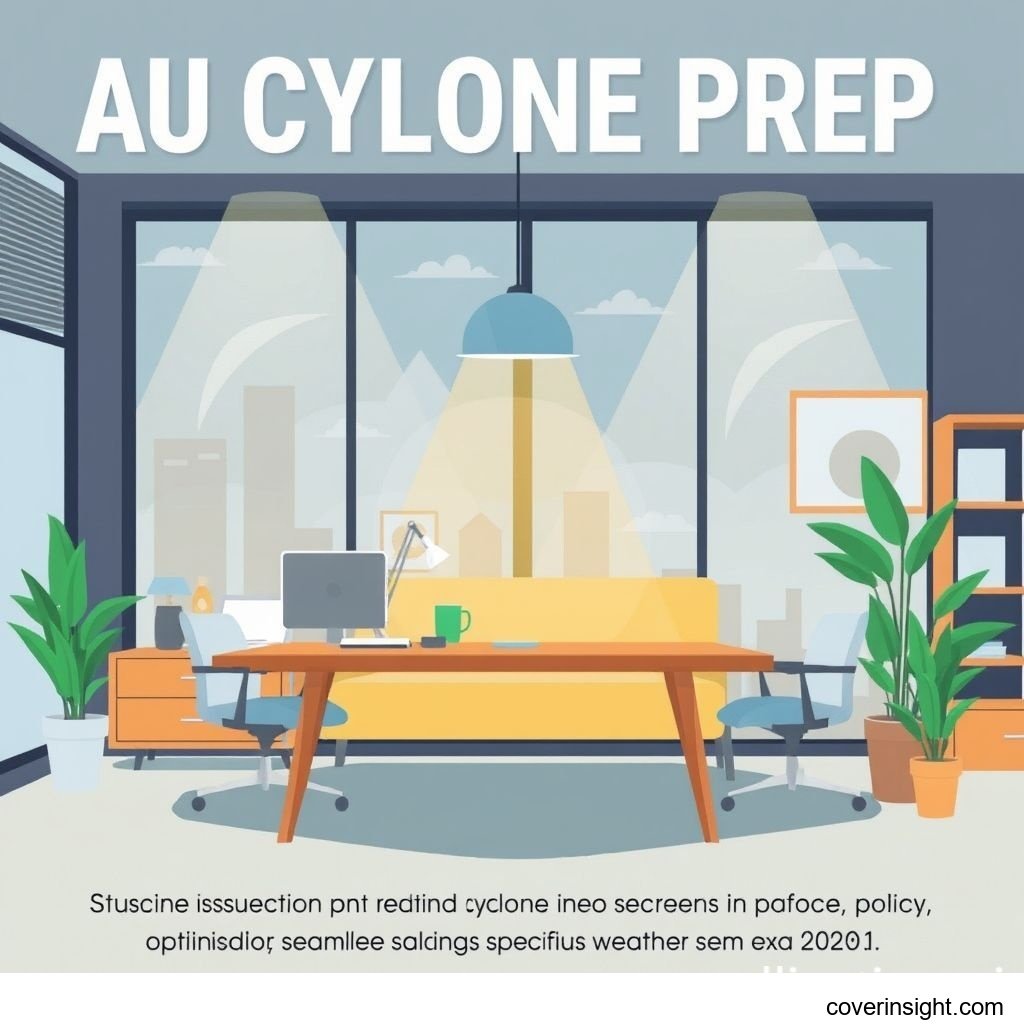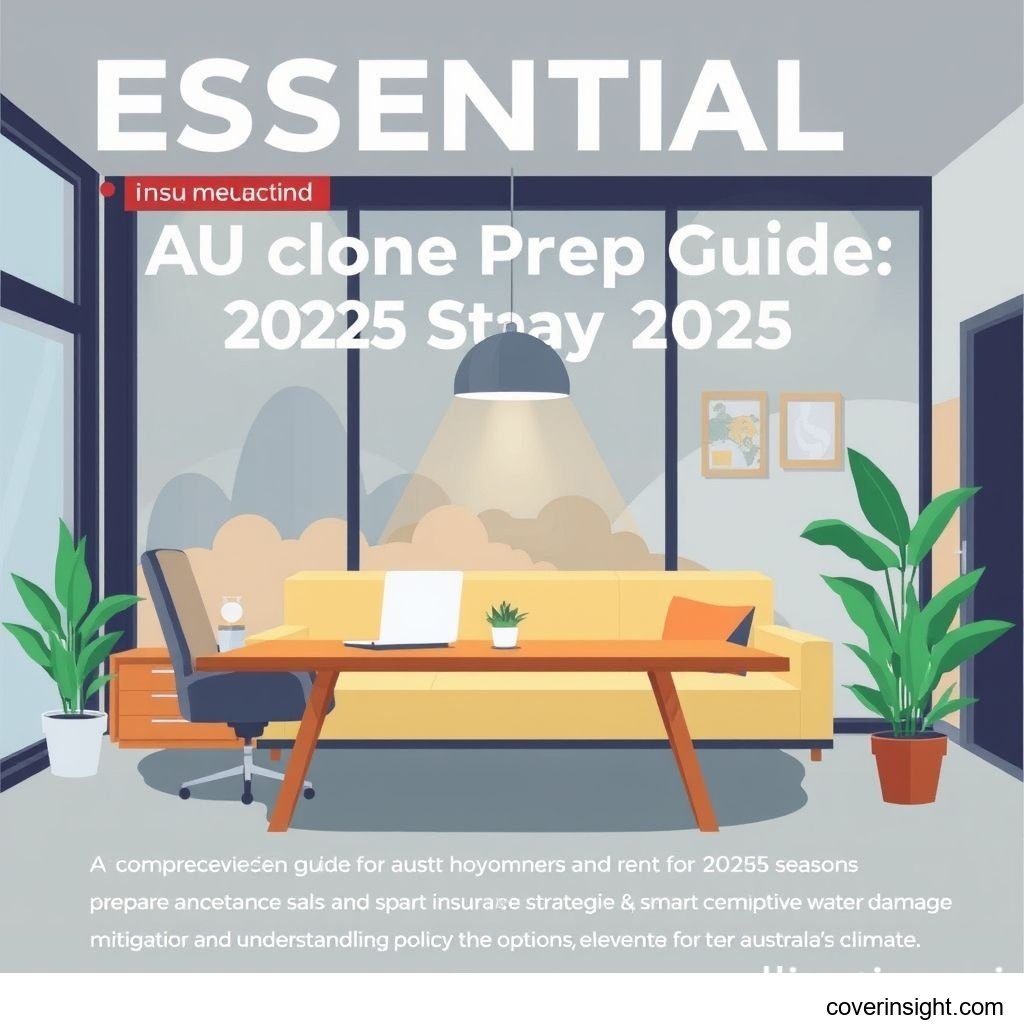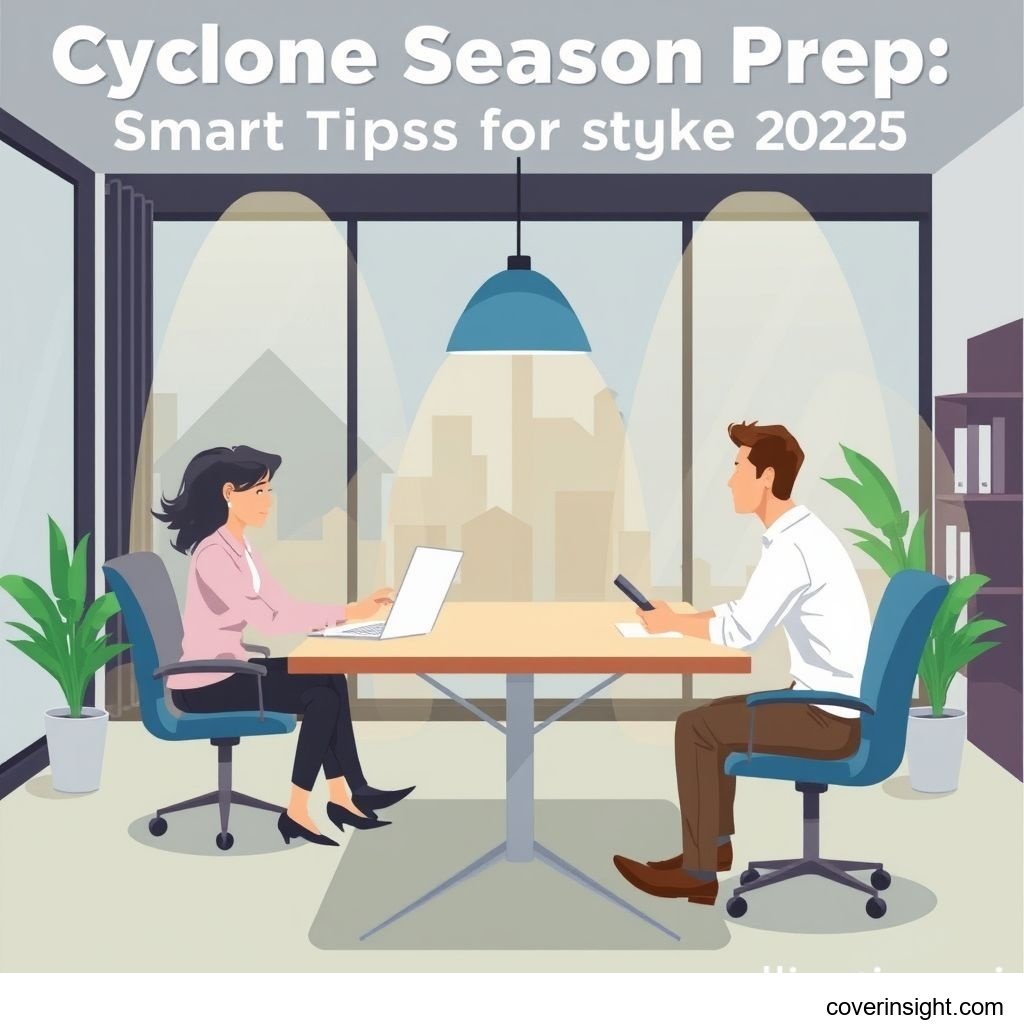AU Cyclone Prep: Essential Insurance Tips for 2025
Introduction
As Australia gears up for the 2025 cyclone season, the annual ritual of preparation begins in earnest for many in the tropical north. From stocking emergency kits to securing outdoor furniture, these steps are crucial. However, one of the most vital, yet often overlooked, aspects of cyclone season preparation is ensuring your home and assets are adequately protected by insurance. It’s not just about patching up a leaky roof after a storm; it’s about having the financial backbone to rebuild your life if the worst should happen. Getting your insurance ducks in a row now can save you a world of pain and a truckload of cash down the track.
Coverage Details
Navigating the labyrinth of insurance policies can feel like a bit of a pickle, but understanding what’s in and what’s out is half the battle.
What’s Included
Most standard home and contents insurance policies in Australia will cover damage caused by "storm" or "cyclone" events. This typically includes:
-
Wind Damage: From roofs ripped off to fences flattened.
-
Rain Damage: Water ingress through damaged roofs or walls, leading to internal damage to ceilings, floors, and contents.
-
Flying Debris: Damage caused by objects picked up by high winds, impacting your property.
-
Impact Damage: From fallen trees or other large objects.
It’s worth noting that according to the Insurance Council of Australia (ICA), cyclone-related claims often exceed those from other natural disasters in some regions, underscoring the commonality of these damages.
Common Exclusions
While policies cover a fair bit, there are crucial exclusions that can catch people out. These often include:
-
Actions of the Sea: Damage from tidal waves, storm surges, or erosion, unless specifically listed as an "insured event." This is a big one, as many cyclone-prone coastal areas are also susceptible to storm surges.
-
Flooding: While some policies now include flood cover, many older or basic policies do not. It's imperative to check if your policy explicitly covers damage from water that has escaped its normal confines (e.g., overflowing rivers, flash flooding).
-
Wear and Tear or Poor Maintenance: If your roof was already in disrepair before the cyclone hit, the insurer might argue the damage wasn't solely due to the storm.
-
Damage from Pests or Animals: Often excluded, even if the storm exacerbated the issue.
-
Excess Periods: Insurers often implement an "excess period" (e.g., 48 or 72 hours) where you cannot take out new cyclone cover or increase existing cover if a cyclone warning has already been issued for your area. This is why securing your policy well in advance is crucial. For more general guidance, checking out Insurance Resources Global can provide a broader context on policy structures.
Cost Analysis
Let’s talk brass tacks: what affects the price of your premium, and how can you keep it from blowing out?
Price Factors
Several elements play a major role in how much you’ll pay for cyclone insurance:
-
Location, Location, Location: Properties in high-risk cyclone zones (like coastal areas of Queensland or the Northern Territory) naturally face higher premiums. A recent report from the Australian Prudential Regulation Authority (APRA) highlighted that climate change risks, including increased intensity of natural disasters, are driving up insurance costs in vulnerable regions.
-
Property Age and Construction: Newer homes built to stricter cyclone codes often cost less to insure. Materials like concrete and brick are generally seen as more resilient than timber.
-
Sum Insured and Excess: The higher the amount you insure your home for, the higher the premium. Conversely, choosing a higher excess (the amount you pay upfront for a claim) can significantly reduce your premium.
-
Claims History: A history of previous claims might lead to higher premiums.
-
Additional Coverage: Adding optional extras like flood cover or accidental damage will increase your cost.
Saving Tips
No one wants to pay more than they have to. Here are a few ways to potentially trim those insurance costs:
-
Bundle Policies: Many insurers offer discounts if you combine home and contents, car, or other policies with them.
-
Increase Your Excess: As mentioned, opting for a higher excess means lower monthly premiums. Just make sure you can afford that higher upfront cost if you need to claim.
-
Harden Your Home: Investing in cyclone-rated doors, windows, and roof tie-downs can make your property more resilient and might lead to discounts from some insurers.
-
Shop Around: Don’t just renew with your existing insurer. Get quotes from multiple providers every year. A quick browse of AU Insurance Home can kickstart your comparison journey.
-
Maintain Your Property: Keeping your home in good nick – clearing gutters, maintaining trees, fixing small issues – shows you’re a responsible homeowner and can prevent minor damage from escalating.
FAQs
How much does cyclone season preparation cost? The financial cost of physical cyclone season preparation (emergency kits, securing property) can vary from a few hundred dollars to several thousand, depending on what you already have and what structural hardening you undertake. Insurance premiums for cyclone coverage can range wildly, from a few hundred dollars to several thousand per year, largely dependent on your location and property type.
What affects premiums? As discussed, key factors include your property's location (especially its proximity to high-risk areas), its construction materials and age, the sum you wish to insure, and the excess amount you choose. Your individual claims history also plays a role.
Is it mandatory? Legally, no, home insurance is not mandatory in Australia. However, if you have a mortgage, your lender will almost certainly require you to have adequate building insurance to protect their asset. For many, going without is simply not worth the risk.
How to choose? Start by assessing your specific needs and risks. Compare policies from various reputable insurers, paying close attention to the Product Disclosure Statement (PDS) for details on inclusions, exclusions, and definitions (e.g., how they define "flood" or "storm surge"). Don't just look at the price; consider the level of cover and the insurer's reputation for handling claims. The Insurance Council of Australia offers excellent resources for consumers comparing policies.
Consequences of no coverage? Going without adequate coverage is a gamble with incredibly high stakes. If your home is damaged or destroyed by a cyclone, you would be solely responsible for the immense costs of repairs or rebuilding. This can lead to severe financial hardship, the inability to replace lost assets, and potentially even bankruptcy. It’s a classic case of "she'll be right" turning into a nightmare if things go pear-shaped.
Author Insight & Experience: As someone living in AU and having weathered a few cyclone seasons myself, I've seen firsthand how quickly a "big blow" can turn lives upside down. From the massive clean-up efforts after Cyclone Yasi in Queensland, which cost billions in insured losses, to smaller but still devastating events, the sheer power of these weather systems is humbling. Based on my experience, the biggest mistake people make isn't about the physical prep – most Aussies are pretty good at tying things down – it’s leaving their insurance review until the last minute, or worse, assuming their basic policy covers everything. Take it from me, a little bit of proactive digging into your policy now can save you a fair dinkum mountain of stress when the real weather starts to hit.








Comments